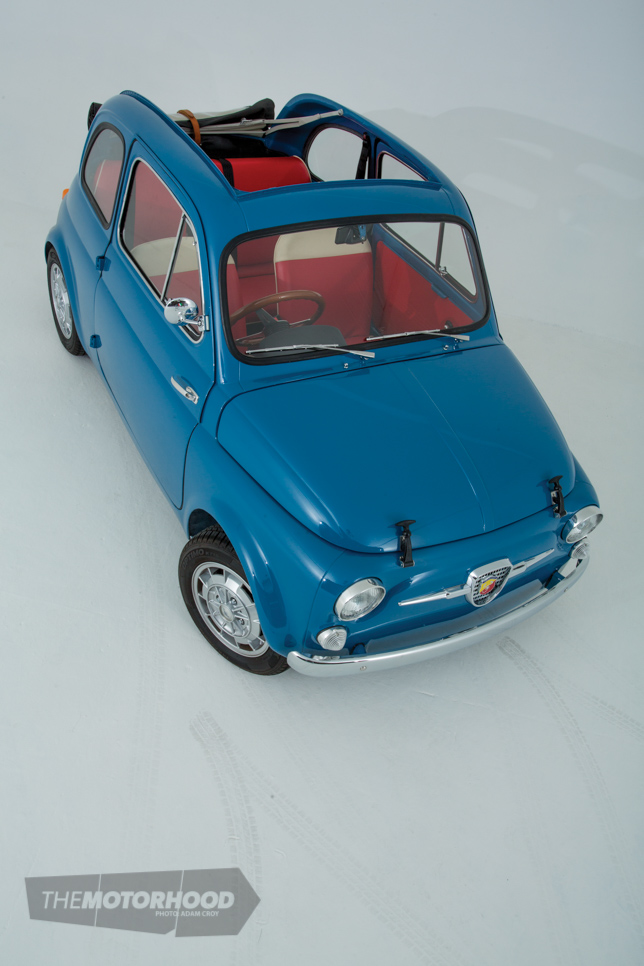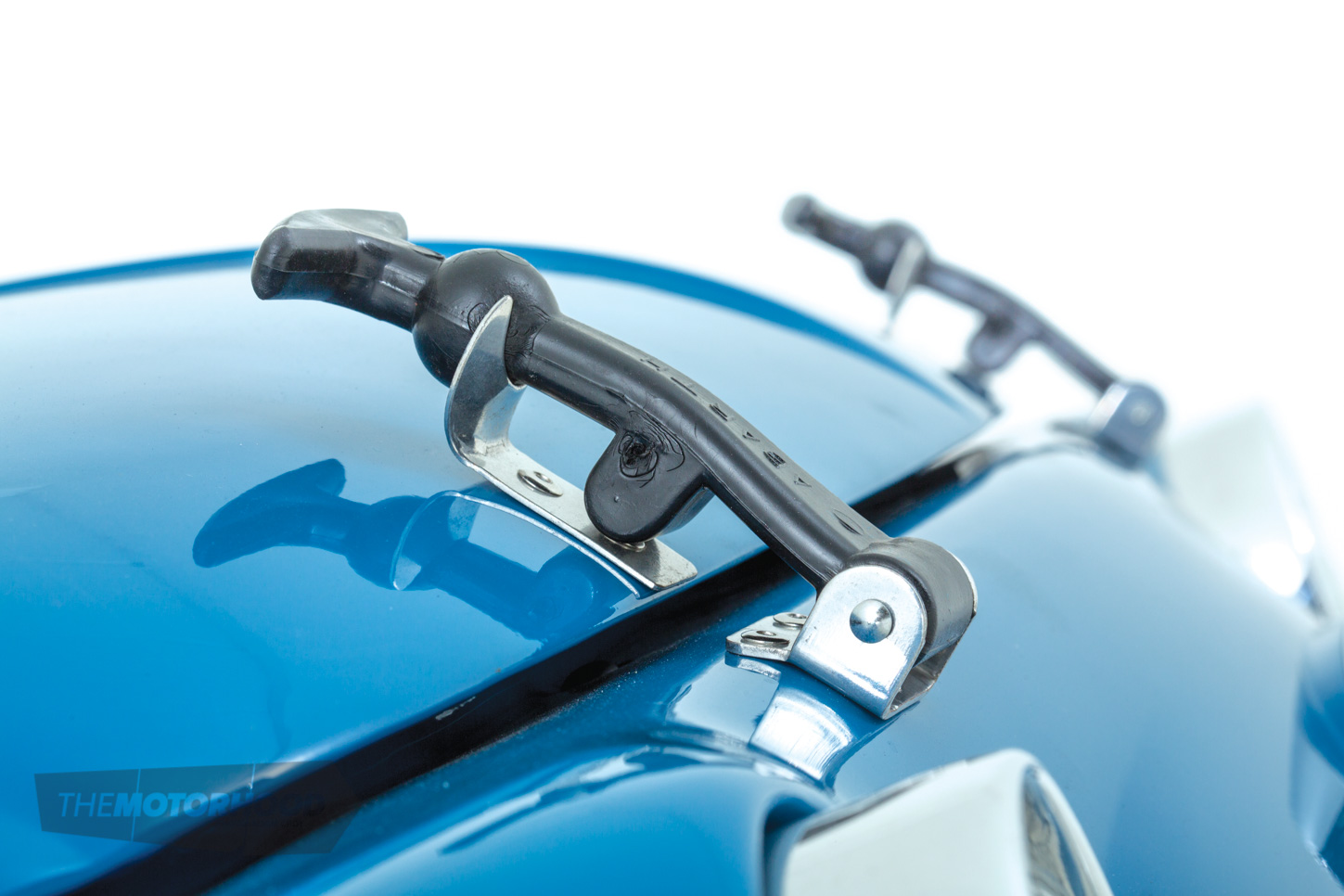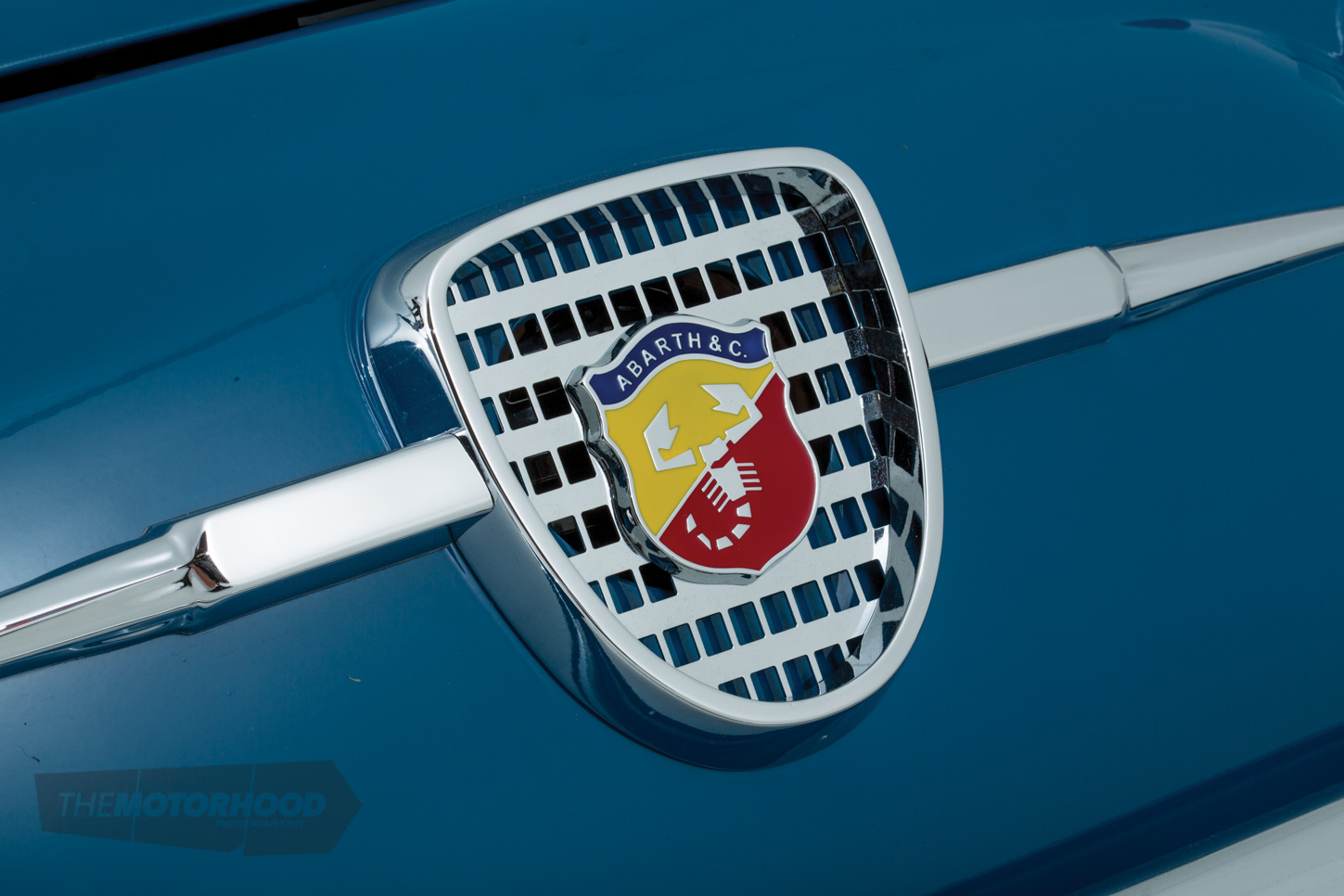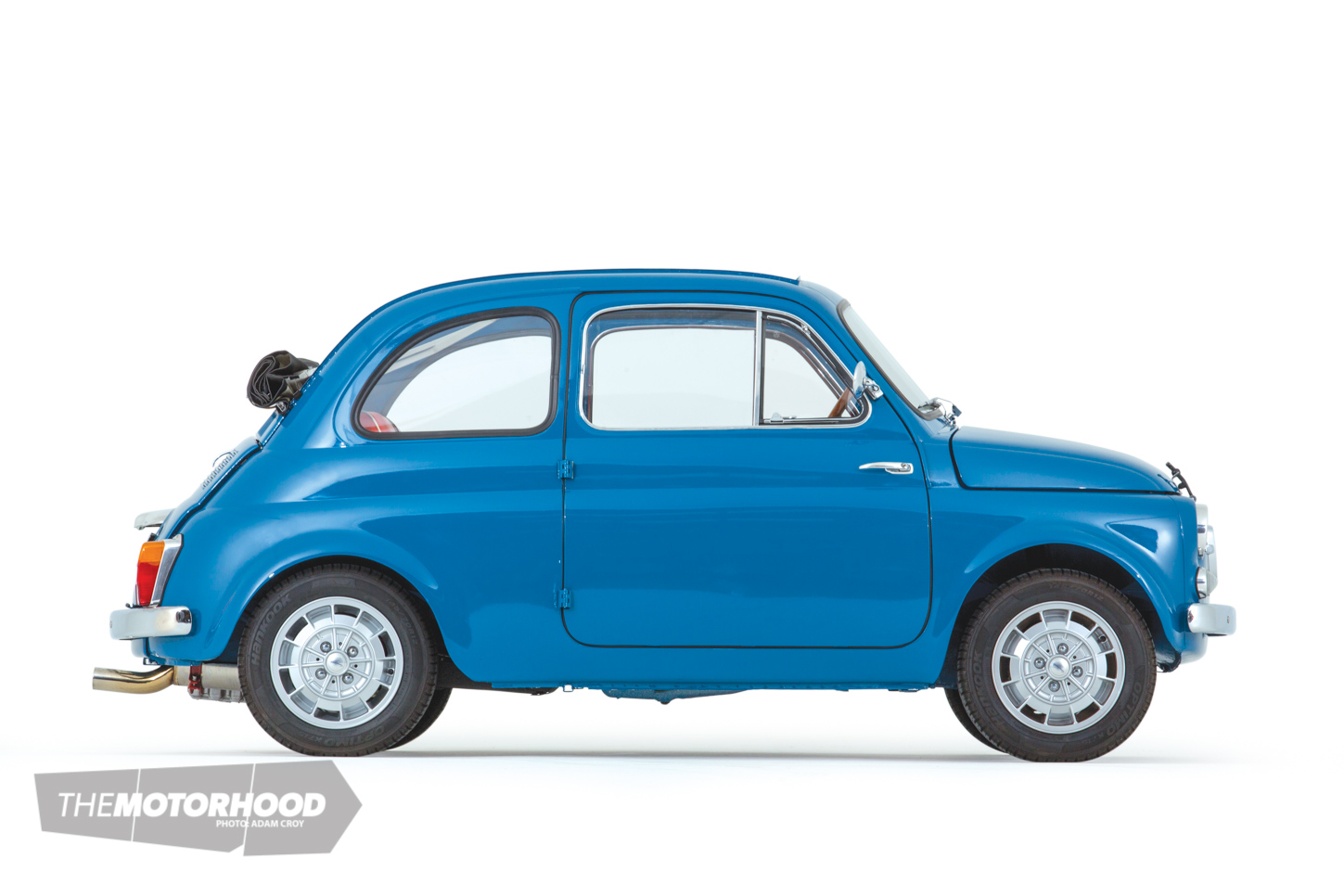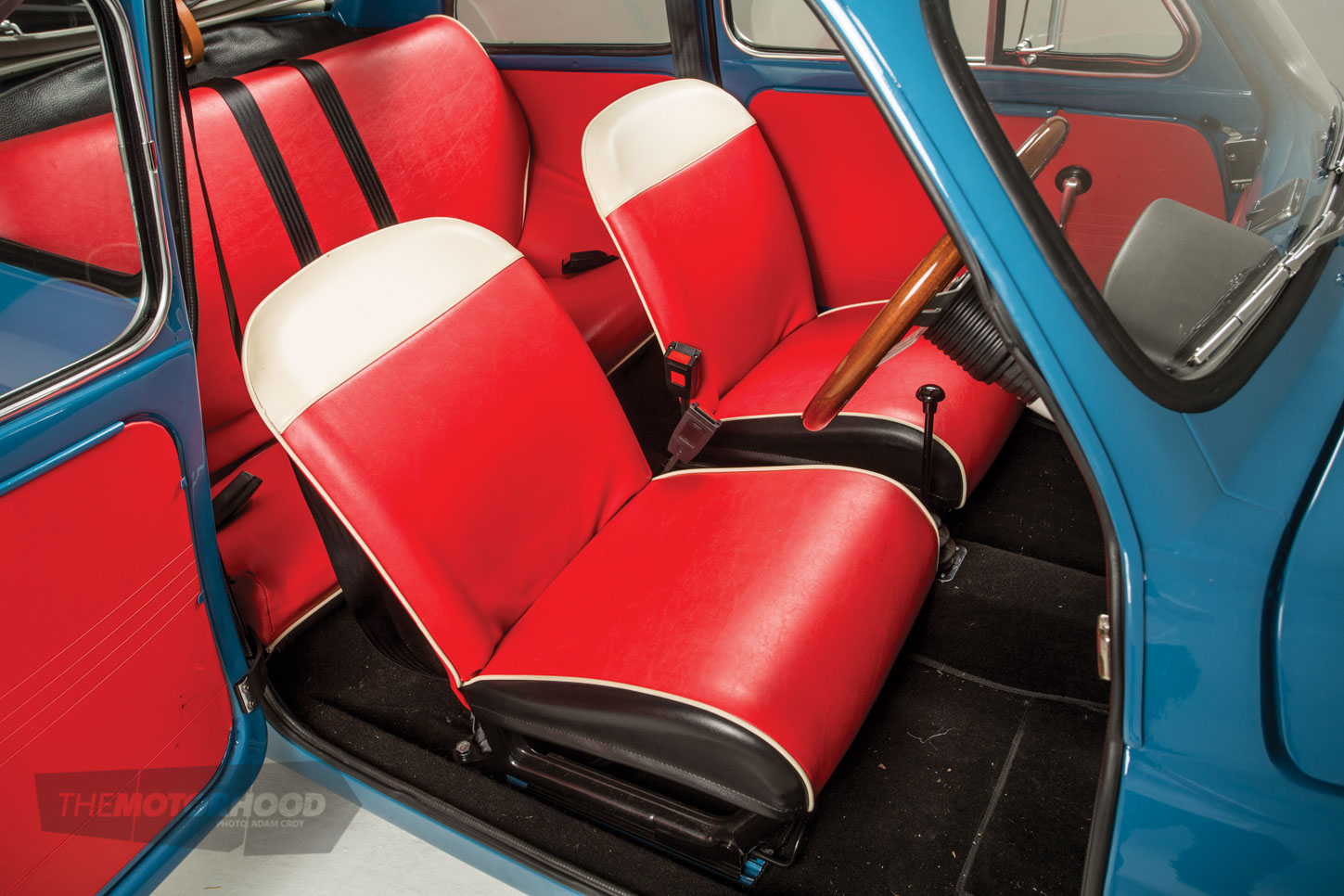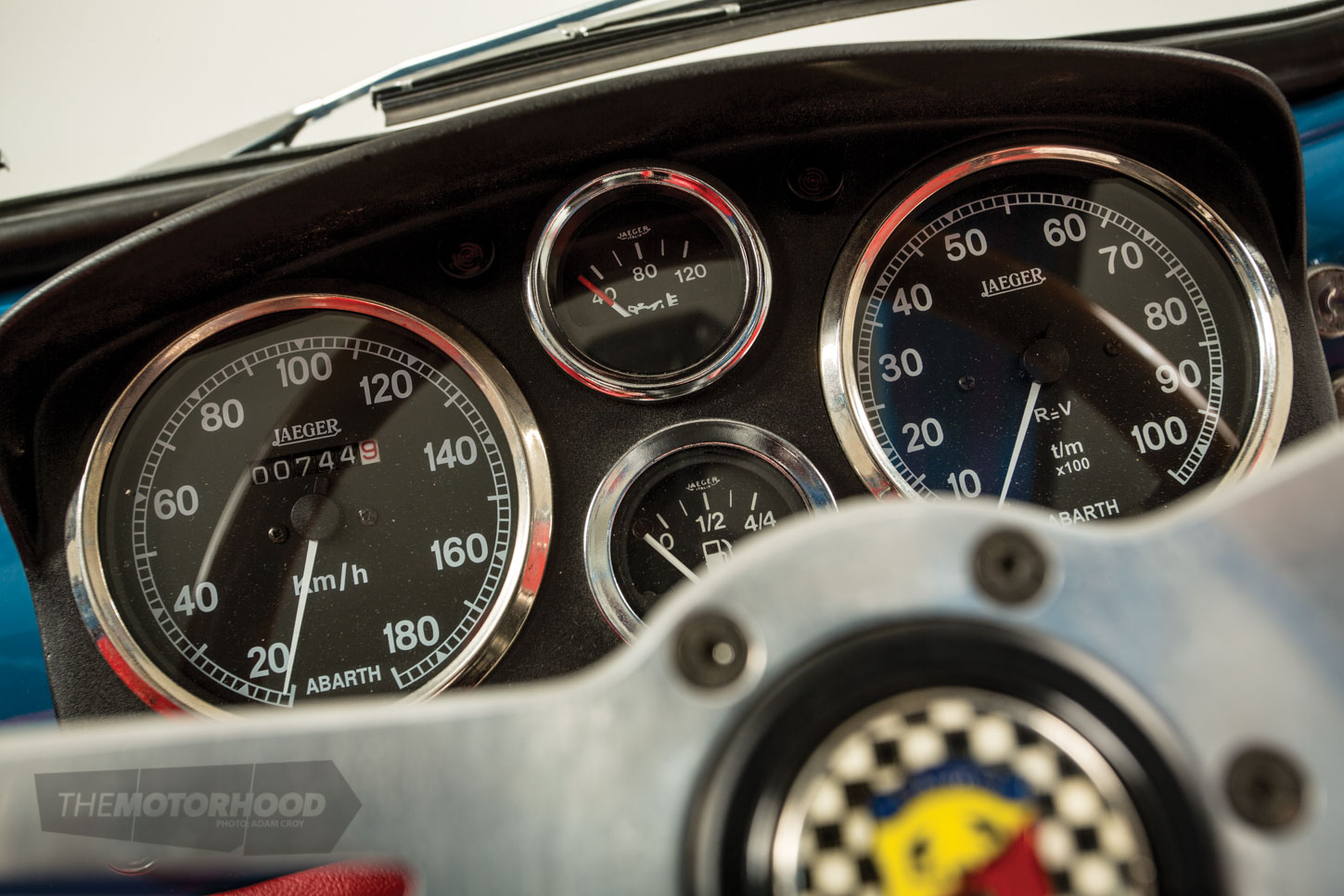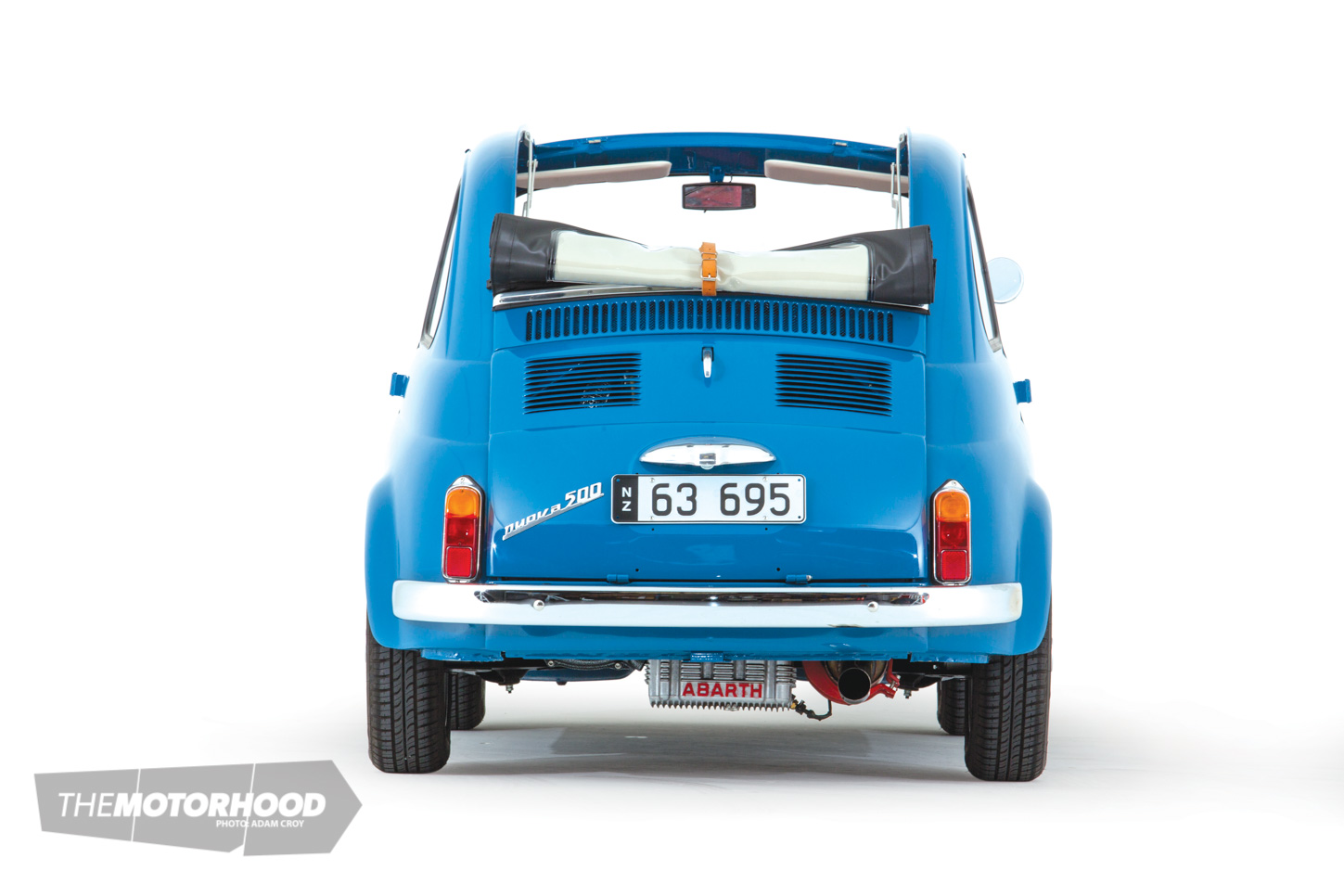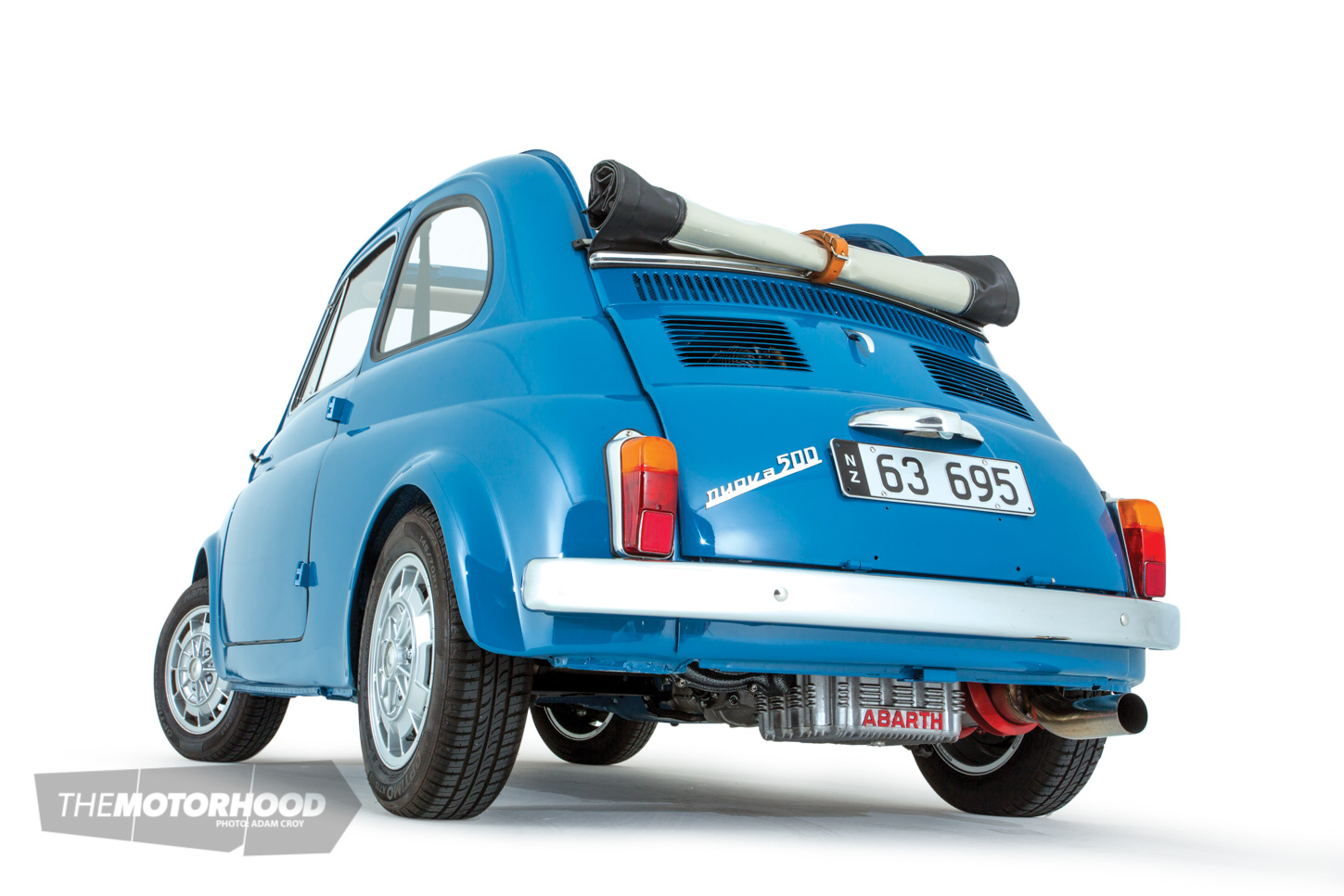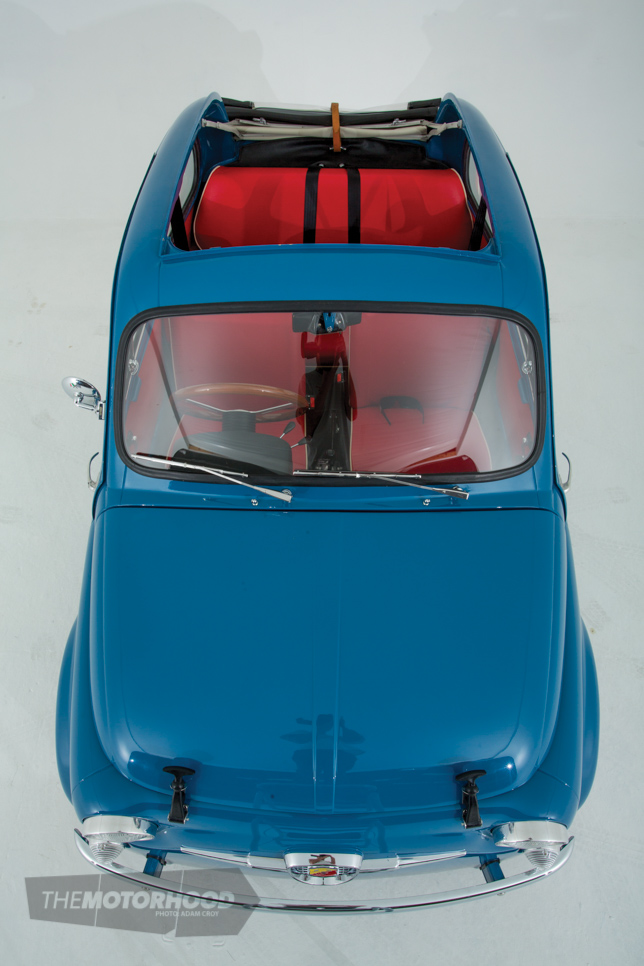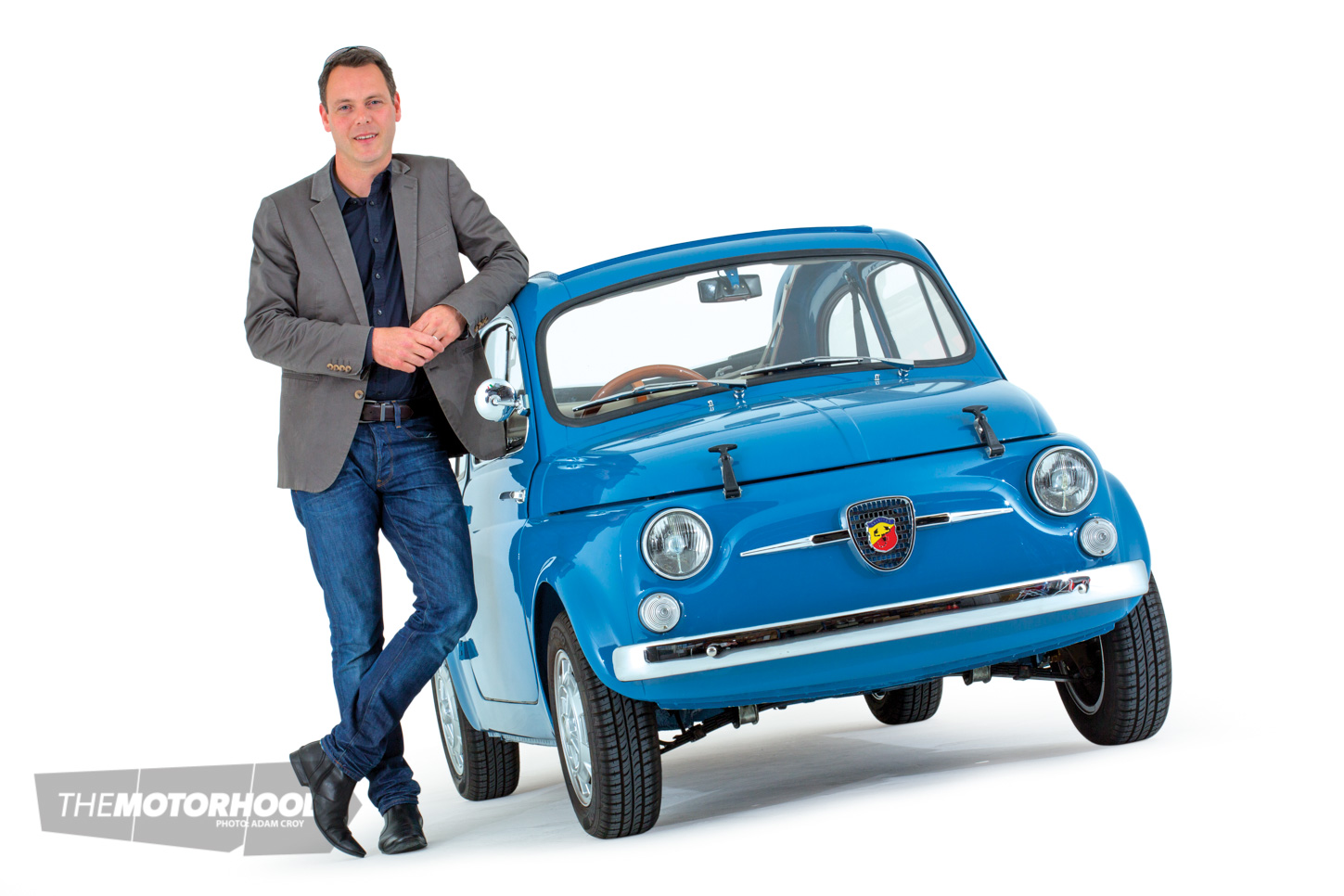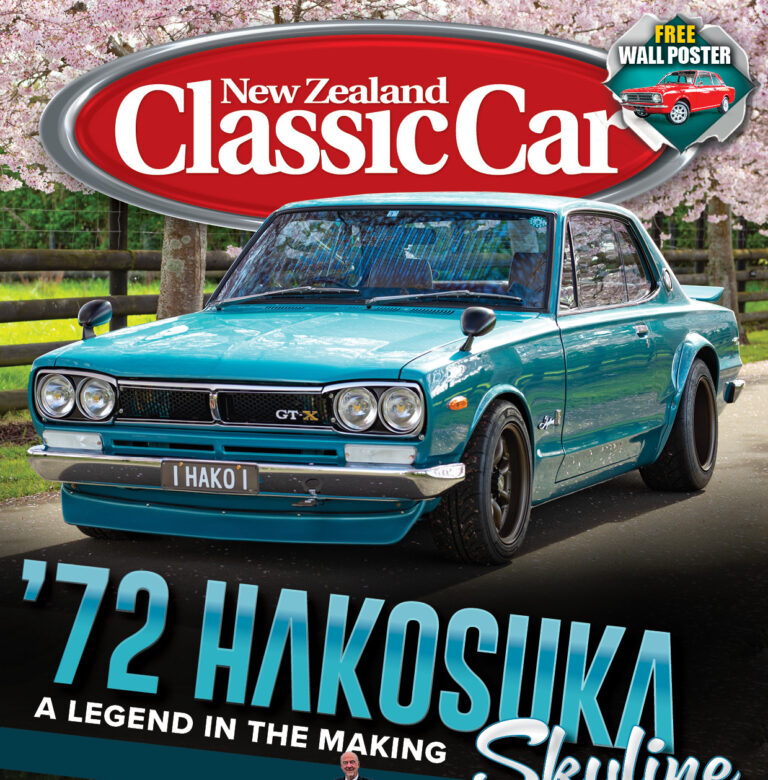data-animation-override>
“There are few cars as cute or iconic as Fiat’s diminutive 500 — and this ‘enhanced’ Bambina certainly takes the cake when it comes to cuteness”

1963 Fiat Bambina A Sting in the Tail
It was Roger Bourne’s infatuation with scooters that led to his eventually owning this beautifully restored Fiat. He’d attended university in Christchurch during the early 1990s, and his passion for classic scooters back then, especially Vespas, flourished to the point where he literally ended up with a shed-full of them. Vespas were plentiful at the time, and best of all — for a university student, anyway — they were affordable.
But the iconic Italian scooters ignited a broader interest in Italian vehicles, and before he knew it he’d graduated to four wheels — and owned a succession of old Fiats and Lancias whilst still at university. But the one car he always wanted eluded him — though to this day he isn’t entirely sure why he never owned a Fiat Bambina during his student days. What he does recall is a spike in Bambina prices at that time, as good ones were snapped up and sent to Japan — perhaps that was partly to blame for Roger missing out?
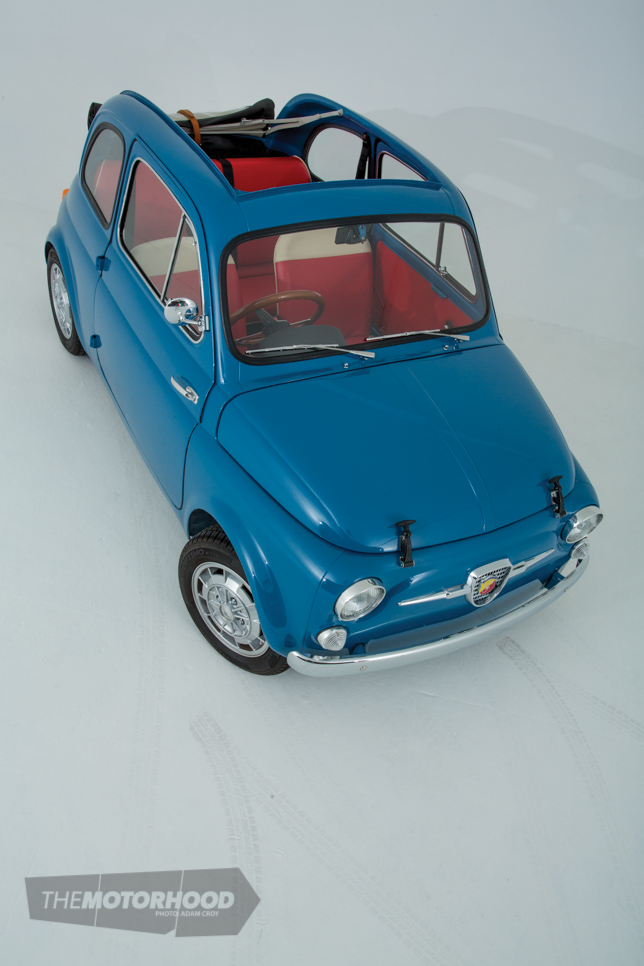
Rusty baby
Fast forward to 2011, and Roger’s love of Italian motorbikes and scooters, while still present and correct, had been temporarily put aside as a young family called for more practical cars. Heavily involved in an imminent house restoration, a few years earlier he’d passed up the opportunity to buy back a 1953 Fiat 1100. Roger bitterly regretted that decision, but once the renovation was finished, he started to look around for a similar project.
With limited garage space a Fiat Bambina seemed like the logical choice, as he likened it to a motorbike, with the added advantage that it could fit the kids in the back seat to go for a drive for an ice cream.
Roger’s search quickly uncovered a 1963 ‘D’ model Fiat Bambina with suicide doors on a local auction site. He knew that these cars didn’t come on the market too often, and as it was in another city, he bought it sight unseen. A friend did, however, check out the car on Roger’s behalf, and reported that it was “pretty rusty.” However, as it had a new WOF, Roger figured that it couldn’t be too bad. Famous last words!
When the Bambina arrived in Auckland, he soon discovered that his new pride and joy was absolutely riddled with rust, especially in the floors, a common area for rust in these cars. The sills and front panel were much the same, while the car’s suspension was literally on its last legs, and the steering system also appeared to be shot. But all that aside, Roger reckoned it was an honest car that ran OK.
The Bambina had been resprayed at some stage of its life, and a replacement engine had been installed, but it hadn’t been ‘restored’ as such, so it still had all the nice little touches — like ‘Fiat’ imprinted on the head of all the bolts.
People often asked Roger about the roof — which is a full convertible, whereas most Bambinas simply have a large sunroof. When Fiat first launched the Nuova 500 in 1957 the car came with full convertible roofs and suicide doors — the apocryphal story is that the open roof saved on valuable steel! However, quite quickly Fiat moved to the more common sunroof style, but it didn’t retool, instead opting to simply bolt a steel roof section to the existing bodywork. In Europe, both options were available for a short period, but in New Zealand the cars were all sold with the roof panel in place.
When the ‘D’ models were upgraded to the ‘F’ in 1964 the doors were conventionally hinged from the front, and the roof panel became integral with the shell. These days it’s pretty common for owners of early cars to opt for removing the panel, but as an early example, Roger’s car was always a full convertible.

The project
Roger drove the Bambina on short trips for a few months over summer, and thoroughly enjoyed every minute with the car. As a result, he decided that the Fiat was well worth saving.
The first thing to do was to completely strip it to a bare shell before sending it off to the blasters in the hope of getting something back that wasn’t too scary. Roger got lucky. While the floor and sills were totally rotten, as was almost the entire front of the car, the rest of the body was actually in pretty good shape. In the UK and Europe it’s not uncommon to replace the entire sides of the car during Bambina restoration projects.
Eventually the Fiat received new floors, sills, inner and outer front guards, battery bulkhead and a new front panel, with patches on the rear quarters and other areas before the correct period shade of blue paint was applied by Darren Brough.
As Roger pointed out, one of the beauties of restoring these cars — as with most classic cars these days — is that new reproduction panels are readily available from both local and overseas vendors. The quality does tend to vary, but a good panelbeater can always make them work well with the application of a little time and effort. Roger’s friend — the aforementioned Dan Brough, who’s also passionate about Bambinas, and works from Auto Body Workshop in Grey Lynn — carried out all the panel repairs. Oddly, one door was in excellent condition, while the other was rusted beyond reasonable repair. It turned out that the previous owner had bought a new-old-stock door when the car had been repainted in the mid ’90s.
In the type of miracle that oftens happen on projects such as this, Roger later found the matching door hidden away in the workshop of Fiat guru, John Collins. John was also hugely generous, assisting in the supply of a wealth of small parts that nowadays can be very hard to find. As well, he was forthcoming with a lot of useful advice as to how to set the car up correctly once he’d discovered that Roger was committed to restoring it properly. As you can imagine, Roger is extremely grateful for all John’s invaluable help.
The Bambina’s interior was left in expert hands, with John Fellowes Motor Trimmers in Mt Roskill completely retrimming the interior to original condition.

Adding some sting
When Roger initially decided to restore his car, he had to figure out what specification to follow. His first thoughts were to match it perfectly to the model’s original specifications, but as he wasn’t all that happy with the simple fact that the engine in his Bambina wasn’t original, he reckoned that it was fair game for an upgrade. As well, as he wanted to use the car with the family on board, so some extra power would come in handy. He finally settled on a suitable compromise — outwardly matching the car’s exterior to the original, but treating the engine and running gear to a few suitable improvements.
When it comes to a repower, just about anything and everything has been tried in a Fiat Bambina — from motorcycle engines to Subaru engines, it’s all been done before. However, Roger was not going the total replacement route, instead, he considered the array of manufacturers worldwide that turn out amazing high-performance Fiat parts. While sorely tempted by an eight-valve double-overhead-cam conversion kit, in the end Roger decided ‘mild is wild’ and went for a modern take on the classic 695 engine first made famous in period by Abarth.
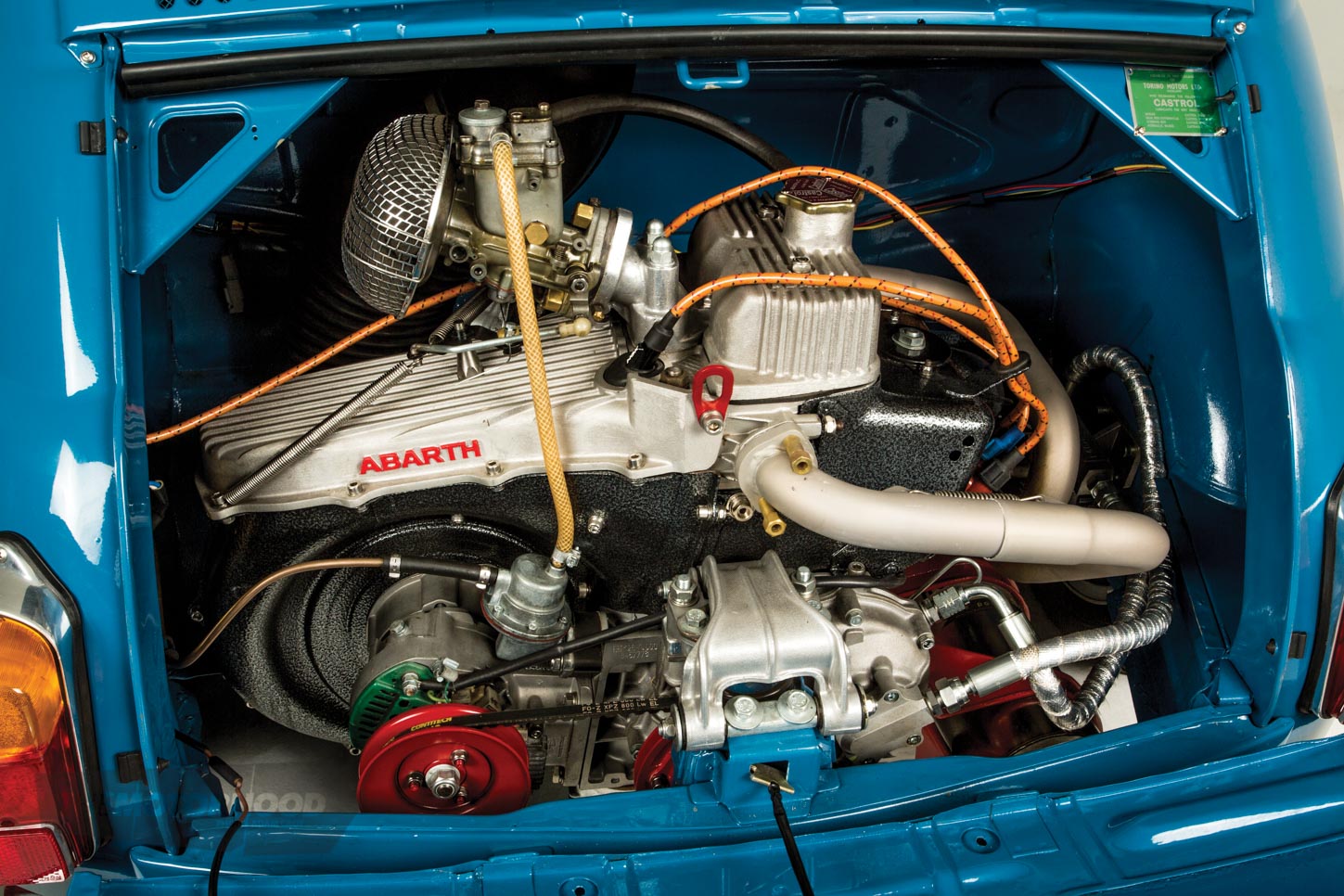
The basis for the engine build was a later engine from a Fiat 126, the car that replaced it when 500 production ended in the ’70s. Cosmetically, these later cars lost all the charm of the earlier 500, but underneath they ran the same floorpan and an outwardly identical engine and gearbox. With a capacity of 652cc, the 126 engine’s bottom end and block is better able to cope with higher-power conversions and, of course, the later synchromesh gearbox makes life a bit easier. Like the 500, the 126 was made in the millions, so the transplant Roger opted for is popular worldwide. However, only around 80 or so Fiat 126s were ever imported to New Zealand, so they’re a little more difficult to find here than they are in Europe. Most have rusted away and/or been used as donor cars already. Again Roger got lucky, as John Collins supplied a 126 out of his personal stash.
Roger turned to a mechanic friend, Neil, to rebuild the engine. Roger wasn’t looking to produce a fire-breathing rocket-ship, so the decision was made to retain the original crank and add a race cam, good-quality forged pistons and H-beam rods. A proper oil filter was also added to replace the original oil slinger set-up. Roger was wondering what to do with the head, when a friend suggested Marsh Motorsport. He visited its website — that trumpeted the slogan “No job too big or too small!” — so spoke to Tony Marsh, who was more than happy to help, especially as it turned out he also owned a Bambina. According to Roger, when you consider the scale of Marsh Motorsport’s business and its success at the top levels of drag racing, it was quite humbling to have Tony working on his tiny twin-cylinder motor. Aside from fettling the head with bigger valves, Marsh Motorsport also went out of its way to balance the crankshaft, not a straightforward job on a parallel twin engine.
The engine build was finally topped off with a Dell’Orto FZD semi-down-draught carburettor and a free-flow exhaust system.
Bespoke baby
Aside from the larger-capacity engine, Roger also fitted the Bambina with rack-and-pinion steering — a huge improvement on the original steering box and, like the engine, a fairly common conversion overseas because of the simplicity of the work involved.
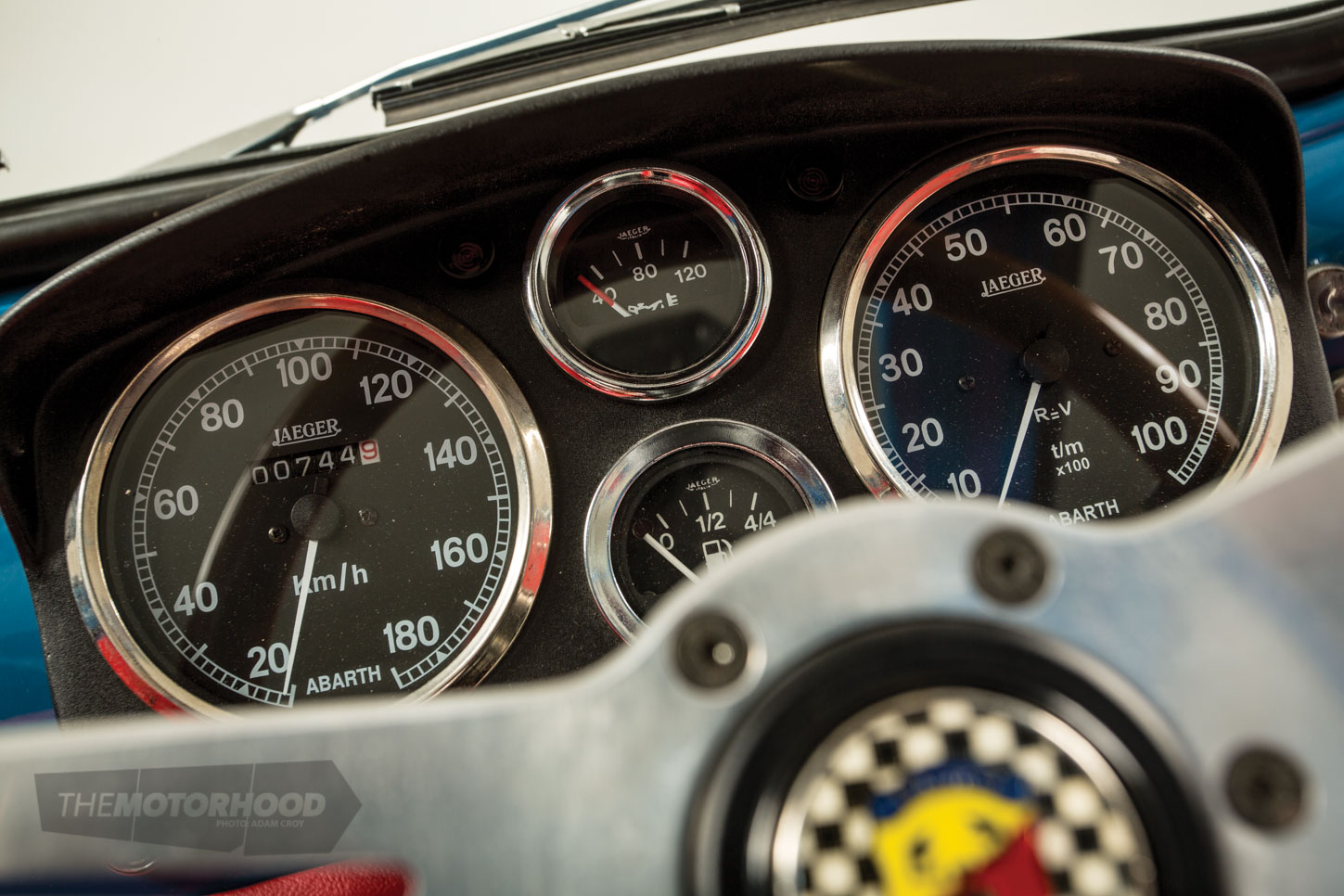
With more power comes the obvious need for better brakes, and Fiat 126 rear hubs with slightly bigger shoes were fitted at the back, while up front the car got a bespoke disc set-up made specifically for Fiat 500s in Germany. To finish everything off, Roger stiffened up the suspension all round with shorter coil springs at the rear, and a reverse-eyed leaf-spring set-up at the front.
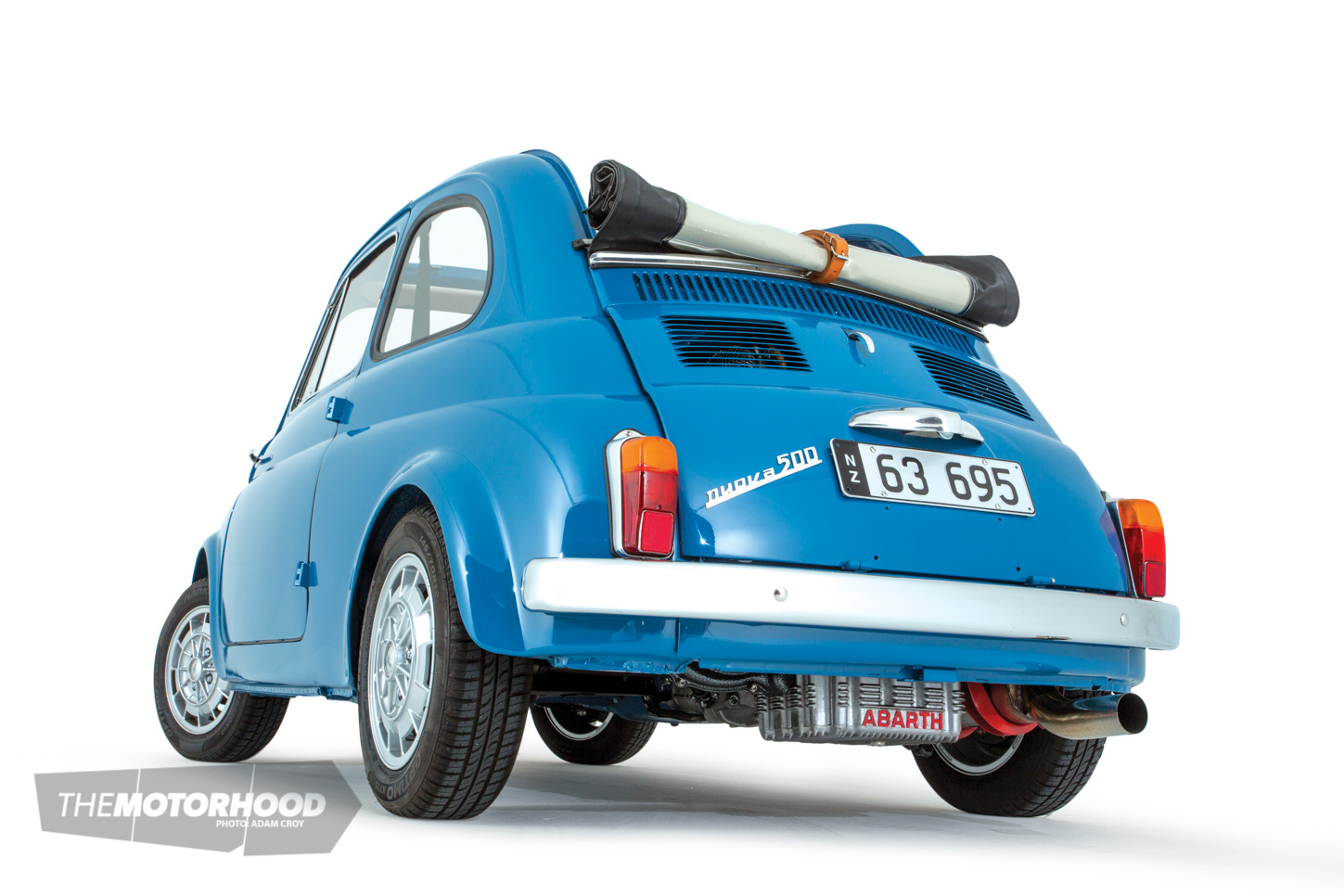
He has clocked up just 500 kilometres in the Bambina since the work was completed, and he is still being careful with the motor, but says the extra power is obvious. The original 500cc engine had about 13kW (18bhp) while the standard 126 donor engine as manufactured was rated at 18kW (24bhp). At a guess, Roger thinks his new engine will be developing around 30kW (40bhp). He’s planning a dyno run at some stage — not so much to confirm the power figures, but to make sure the jetting of the Dell’Orto is spot on.
Meanwhile, he’s happy that it accelerates well and cruises at motorway speeds comfortably — although according to Roger it won’t spend a lot of time on the motorway, but will more likely found cruising the quieter country roads over the summer.
Roger would like to thank everyone who helped with the car, and in particular Dan Brough, from Auto Body Workshop, Grey Lynn, for expertise on the panel work and fabrication, Neil for all things mechanical, Marsh Motorsport for the head work and engine balance, and Nick from Ron Wood Electrical, who built a fantastic custom wiring loom and for whom nothing was too much trouble. And also NZ ‘Fiat guru’ John Collins, who found rare parts, offered advice, lent factory tools and supported the project right from the start.
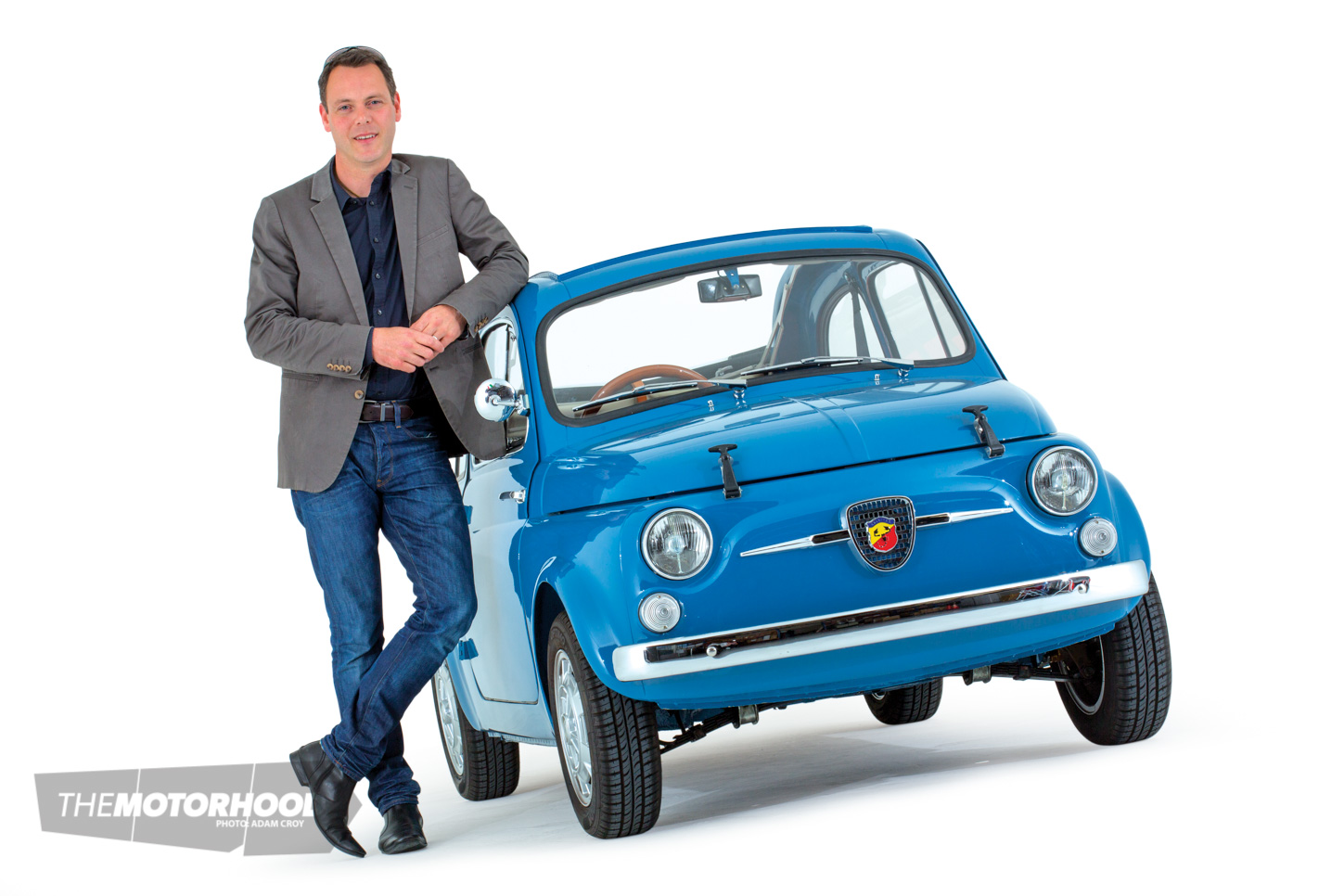
Roger would also like to say a special thanks to car painter Darren Brough and, finally, to John Fellowes for contributing the car’s outstanding interior.
- 1963 Fiat Bambina 500D (as featured)
- Engine — Fiat 126 two-cylinder
- Capacity — 652cc
- Bore/stroke — 77mm x 70mm
- Valves — OHV, two per cylinder
- Comp ratio — 7.3:1
- Max power — 30kW at 4000rpm (est)
- Fuel system — Dell’Orto FZD semi-down-draught carburettor
- Transmission — Four-speed manual
- Suspension F/R Independent by transverse leaf spring, upper wishbones / independent by semi-trailing links, coil springs
- Steering Rack and pinion
- Brakes F/R Disc/drum
- Dimensions:
- Overall length 2970mm
- Width 1322mm
- Wheelbase 1840mm
- Track F/R 1121mm/1135mm
- Kerb weight 500kg
- Performance
- 0-100kph 48 seconds (est)
- Max speed 120kph (est)
The Kiwi Connection
The very first Nuova 500s officially arrived on our shores almost two years to the day following the model’s Italian launch, and by the end of 1960, in a move to increase the range of cars available here, 500Ds were soon being locally assembled at the VW Motors Otahuhu plant.
Before long 800 examples were being built a year, and with its low price and high local content, those in control of assembling the diminutive Bambina played a pivotal role in changing the regulations that bound together the local motor industry.
With the Fiat’s increasing popularity in New Zealand, especially amongst lady drivers, Torino Motors decided to offer a Bambina as a prize for the 1966 Miss New Zealand pageant — the car eventually being won by Heather Gettings. A Bambina was given as a beauty pageant prize for the next three years, resulting in lots of publicity, as the cars took place in parades of contestants through the main streets.
Interestingly, Torino Motors also tried to translate the Bambina’s female-friendliness to motor sport when, in 1965, it entered an all-women team for that year’s Wills Six Hour production saloon car race at Pukekohe — a race for cars in showroom trim. The women’s team consisted of Margaret Hough and Evelyn Hadfield, with their Bambina supported by an all-women crew of mechanics. Like the men who had competed in a 500 in the previous two Wills Six Hour races, Hough and Hadfield came in last but, by finishing, they further enhanced the little Fiat’s perfect reliability record in the race.
Christening the Bambina
New Zealand had an important connection with the Fiat 500 — indeed, a major claim to fame is that the name ‘Bambina’ was first used in New Zealand. In 1965, with the introduction of the upgraded 500F model, Rob Elliot — the managing director of the local Fiat distributor, Torino Motors –
hit upon marketing the new model as the Fiat Bambina. The name quickly took hold, and was soon being used worldwide, being applied to all Fiat 500 models, even those built before Elliot came up with the name.
Further Reading
If you’d like to know more about the Fiat 500 — especially with regards to the car’s association with New Zealand — then Todd Niall’s excellent book, Bambina: The Fiat 500 in New Zealand (Iconic Publishing, Kumeu, 2007) is an absolute must.
Although now out of print, Enzo Altorio’s handsome Fiat Nuovo 500 Reference (Edizioni Legenda, 2005) is also worth seeking out.


